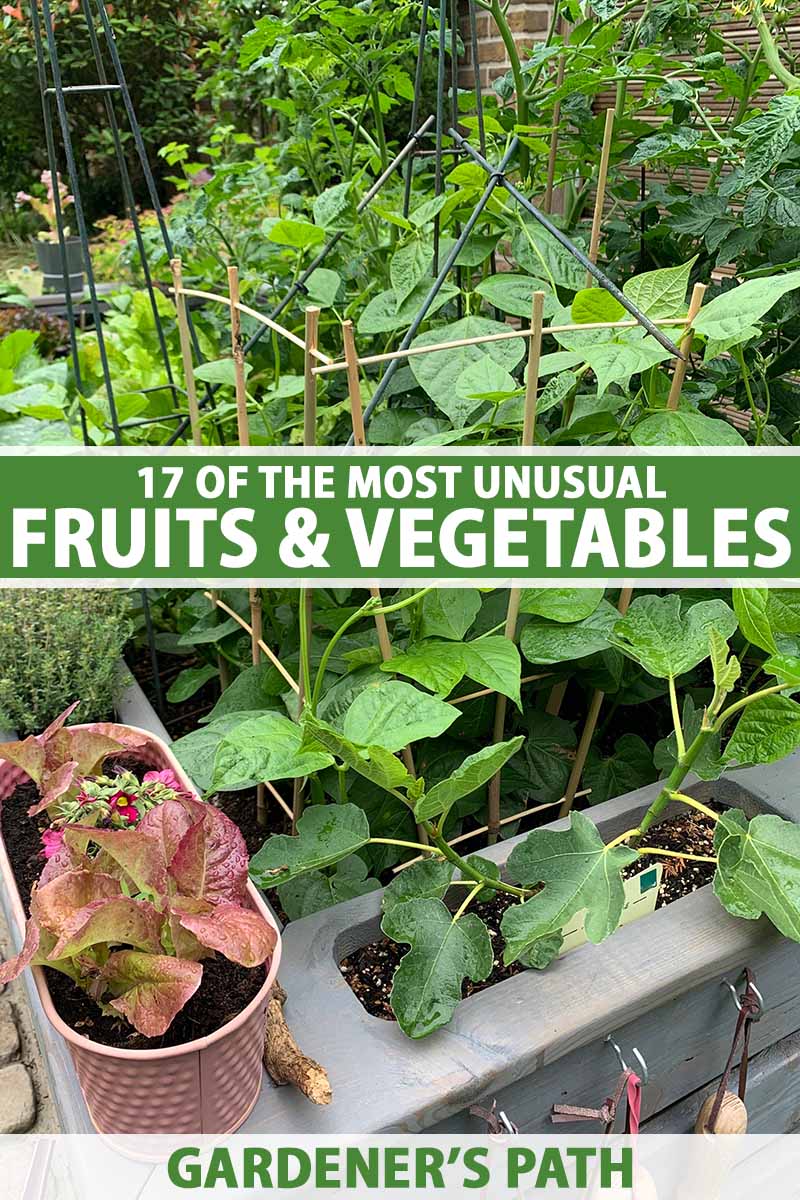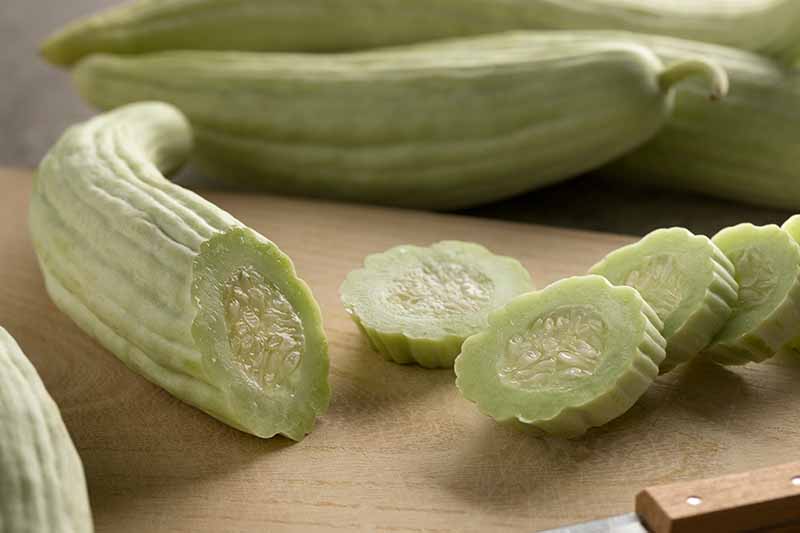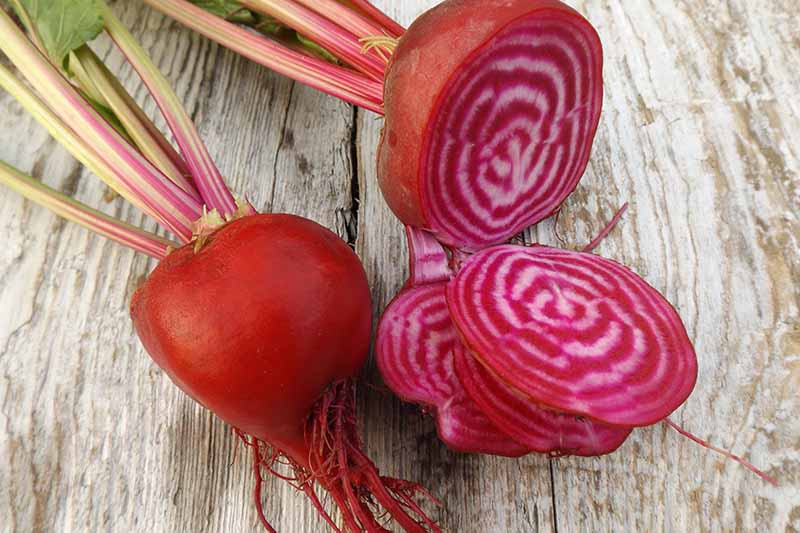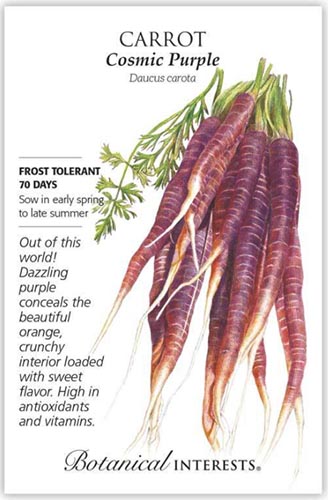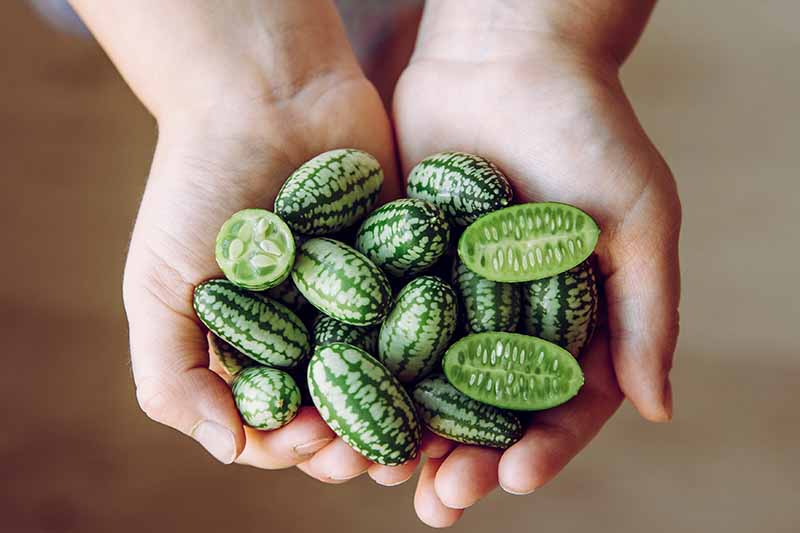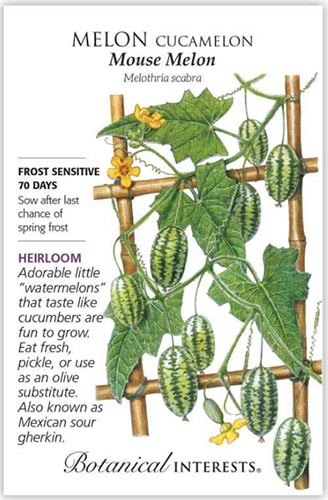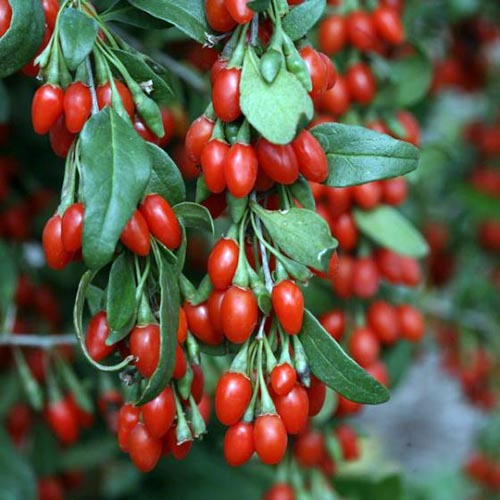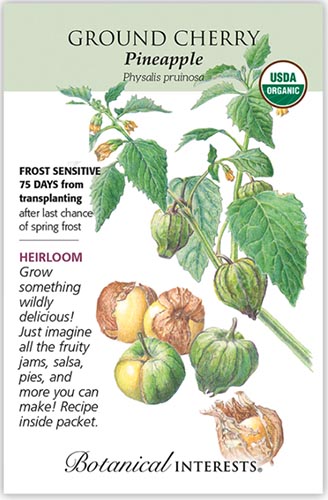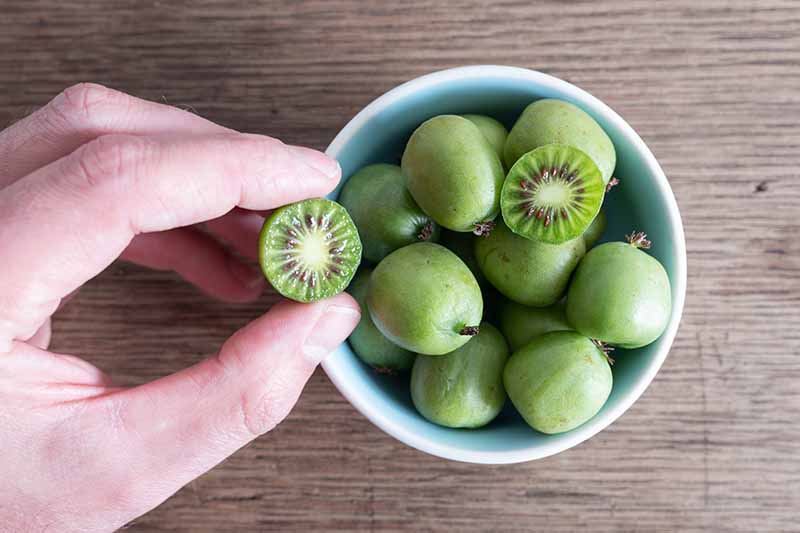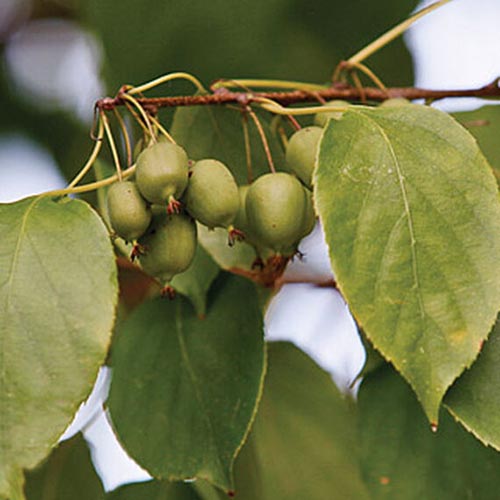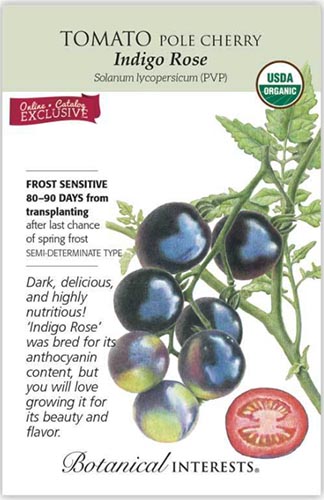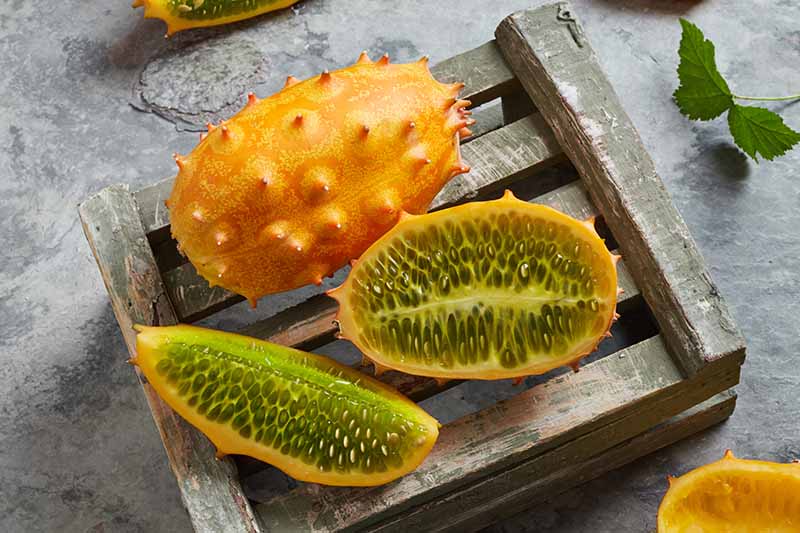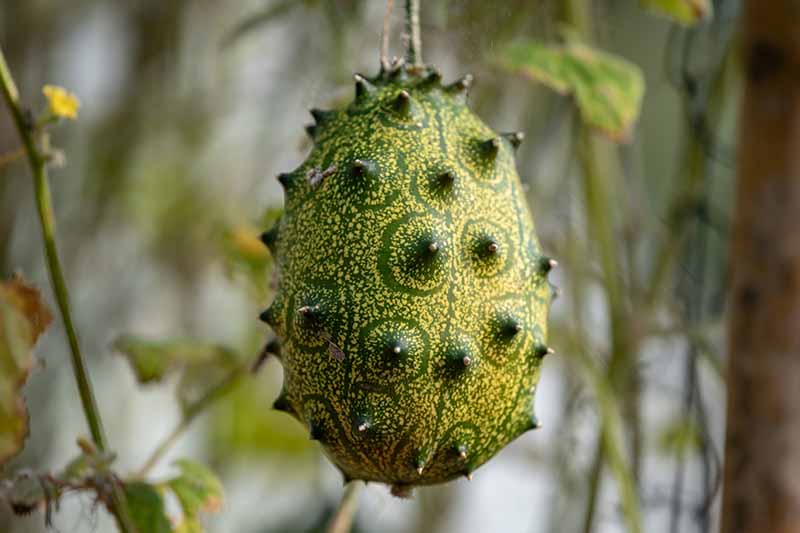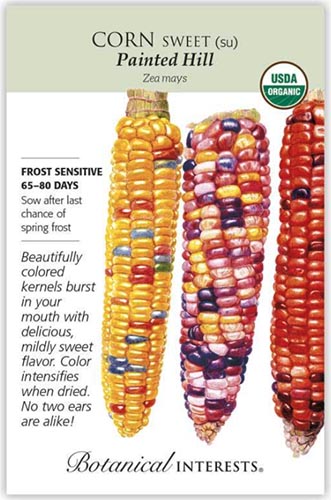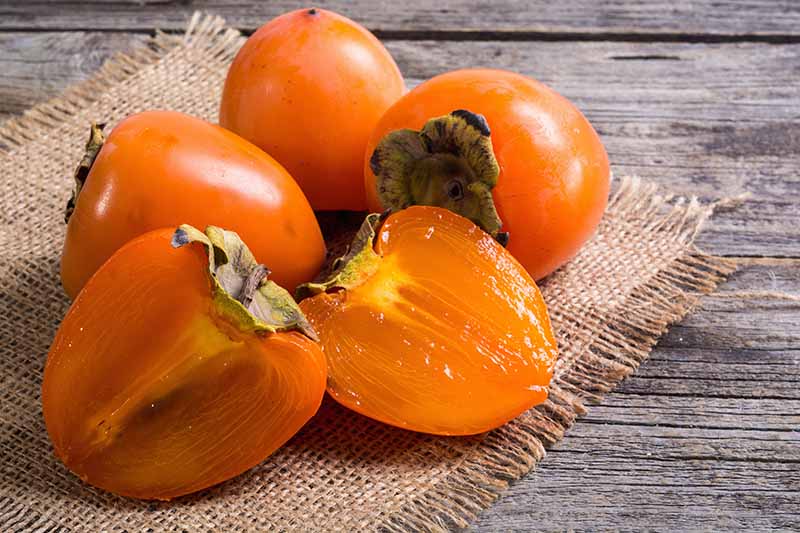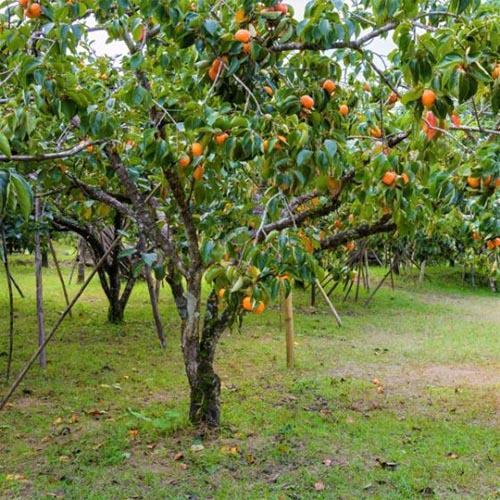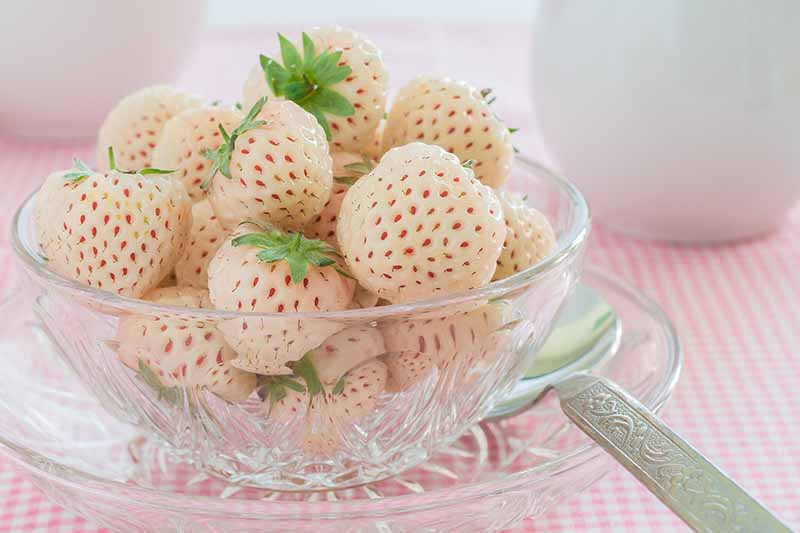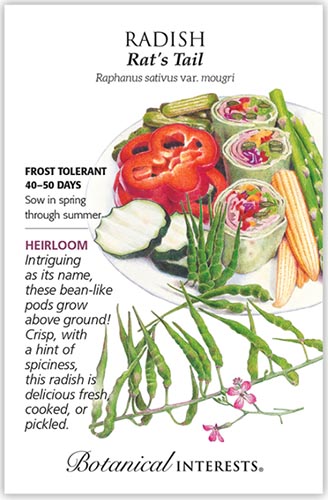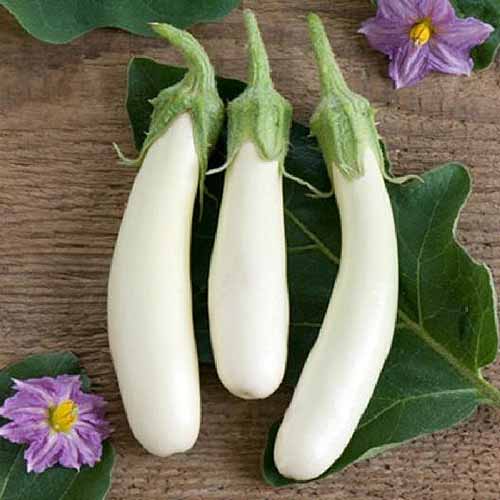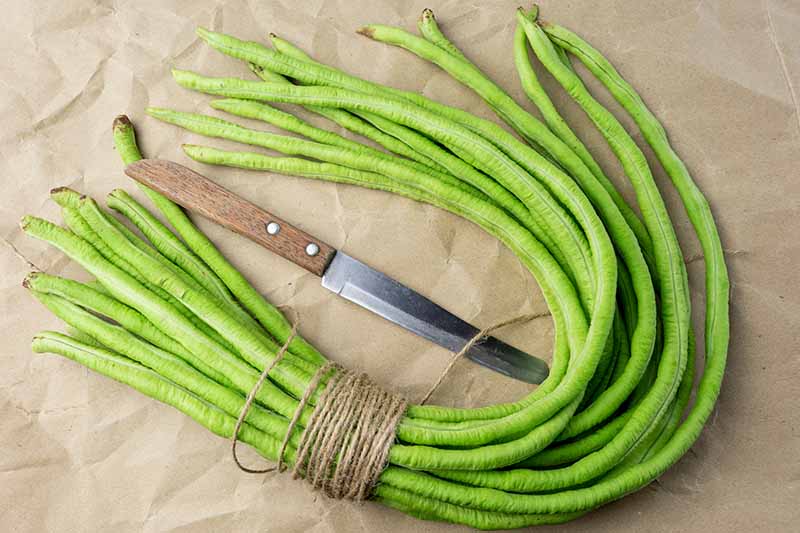And if you have an adventurous streak, there are a wide array of unusual varieties available to you, provided you have the right growing conditions. Whether it’s annuals for my garden patch or trees for my orchard, there’s a question I always ask myself before I consider adding a new fruit or vegetable: how easy is this to find at the supermarket? We link to vendors to help you find relevant products. If you buy from one of our links, we may earn a commission. That’s why I’ll probably never plant a ‘Granny Smith’ apple tree, even though I love this tart apple cultivar, since Granny Smiths are readily available at my local supermarkets. On the other hand, for hard-to-find fruits or rare cultivars, I give the plant bonus points when being considered for inclusion. And that is the same question I asked when cultivating this list of 17 of some of the most unusual fruits and vegetables you can grow in your backyard. While you may find a few of these available for purchase if you have a really great farmers market in your area, most of us will only lay eyes on these in person the day that we grow them ourselves. Ready for a sneak peek? Here’s everything I’ll cover: But before your sense of adventure makes you yell out, “One of each, please!” make sure to double check the growing conditions required for each of these, to save yourself from disappointment. I have included this information for each of these fantastic plants.
1. Armenian Cucumbers
Have you ever thought to yourself, “Gee, I wish there was a type of cucumber that was really long, burpless, a good keeper, and could stand up to blistering heat”? Perhaps you never made that particular wish, but I’m going to bet you’ll agree it’s a great idea. The answer (to the wish you never made) is here – Armenian cucumbers. Armenian cucumbers aren’t true cucumbers like other varieties cultivated from the Cucumis sativus species. They are actually melons, cultivars of C. melo, just like honeydew and cantaloupe – but they taste and look like cucumbers. Armenian cucumbers are pale green and ribbed, with thin skin and few seeds. Also known as serpent cucumbers or yard long cucumbers, these wonders can grow to be three feet in length. These are considered slicing cucumbers, but I have experimented with fermenting them, and they work fabulously for that purpose as well. If turning your bumper crop into pickles sounds like a brilliant plan and you need a recipe for lacto-fermented dill pickles, you’ll find one at our sister site, Foodal. Armenian cucumbers are annual plants – plant them in full sun and grow them as you would a cucumber. The vines of these plants can reach six to eight feet in length – you can let them sprawl if you have the room or train them to grow on a trellis.
2. Banana Melons
Let’s continue to explore longer-than-usual produce for a moment, shall we? These plants are extremely drought and heat tolerant, and have proven themselves in my high desert garden year after year. It will take 50 to 70 days for your Armenian cucumber plants to produce ripe fruit. Armenian Cucumber Seeds You’ll find Armenian cucumber seeds available for purchase in two-gram packs at Botanical Interests. Check out our guide to growing cucumbers to learn more. This time our selection takes the form of a melon that is unabashedly sweet and comes in a surprising shape, specifically, a banana-like shape. ‘Banana’ is a muskmelon cultivar that can reach 18 inches long and weigh up to nine pounds.
3. Big Max Pumpkins
Have you ever thought of growing a giant pumpkin in your backyard? Maybe it’s the right moment to entertain the fanciful idea of adding a behemoth to your pumpkin patch. Some fruits will have lobes running lengthwise on the fruit, and some may show some light netting. This cultivar is also sometimes called ‘American Banana,’ ‘Banana Citron,’ ‘Cuban Banana,’ and ‘Mexican Banana.’ Plant ‘Banana’ melons as an annual in full sun in your melon patch, and look for ripe fruits in 90 days. ‘Banana’ Melon Seeds You’ll find ‘Banana Melon’ seeds available for purchase in an array of pack sizes at Eden Brothers. How about slipping from this ‘Banana’ into a whole article about different melon cultivars? We’ve got you covered, with 33 melon varieties to discover. Hey, you only live once. Do you really want to look back at your life later and regret that giant pumpkin you never grew? Existential questions aside, ‘Big Max’ has big potential. It might even have you pondering ideas of entering your homegrown pumpkin in a competition at a local fair. Just don’t expect Guinness World Records to come banging on your door – while ‘Big Max’ pumpkins can weigh up to 200 pounds, the current record holder for heaviest pumpkin in the world weighed in at over 2,600 pounds. So, let’s consider ‘Big Max’ as a gateway giant pumpkin, one for you to practice with on your way to mammoth vegetable glory. Of course, if taking ‘Big Max’ to the state fair isn’t high on your list of priorities, you can always keep it at home and use it as an oversized jack-o’-lantern. ‘Big Max’ is an open-pollinated, heirloom variety of Cucurbita maxima that has light orange skin and contains thick walls of very moist, tasty, yellowish orange flesh – so it could also be transformed into soup or pumpkin pie filling. The vines of these annual plants can reach 10 to 15 feet long, so make sure to give them plenty of room – and as with growing more modest sized pumpkins, make sure to grow them in full sun.
4. Chioggia Beets
If your garden plan includes growing beets but you’re looking for something a little different, you may wish to consider ‘Chioggia,’ an heirloom beet variety from Italy that boasts beautiful red and white rings inside its red skin. You can learn more about the proper techniques for pruning pumpkin plants in our article. Short season gardeners beware, you’ll need 120 frost-free days to bring ‘Big Max’ to maturity. ‘Big Max’ Pumpkin Seeds Ready to take the giant pumpkin growing plunge? You can find organic ‘Big Max’ pumpkin seeds available for purchase in packs of four grams, enough to sow five mounds, at Botanical Interests. And by the way, the trick to growing giant pumpkins isn’t only in selecting the right variety, there are many other steps involved to ensure vegetable glory. Want to know more? Read our article on growing giant pumpkins. This heirloom cultivar takes its name from Chioggia, a town located within the metropolitan boundaries of the renowned city of Venice, a location rich with history and known for its colorful glasswork and masks. With ‘Chioggia,’ we can add colorful veggies to the region’s fame – as well as the beet, this Italian town also gives its name to a variety of radicchio and a pumpkin cultivar. When you slice one of these red-skinned beets in half horizontally, you’ll find concentric rings alternating in bright reddish pink and white, giving these roots a candy-striped or bull’s-eye appearance. ‘Chioggia’ beets are round and slightly flattened on top, and are usually picked when the roots are about two inches across. These beets have a delicate flavor and thin skin, and are very sweet when planted in rich soil amended with compost or manure.
5. Cosmic Purple Carrots
When you grow your own carrots at home, you get to choose from some fantastic cultivars. And if you want to add a bit of excitement to your carrot patch, one that you may wish to include is ‘Cosmic Purple.’ The red pigments in these beets can bleed when boiled, so if you want them to retain their gorgeous stripes, steam them lightly. You might also consider julienning or cutting them into slices, and enjoying them raw on salads to preserve their impressive striping. ‘Chioggia’ Beet Seeds You’ll find organic ‘Chioggia’ beet seeds available for purchase in packs of two grams at Botanical Interests. Learn more about how to grow beets in our guide. ‘Cosmic Purple’ has gorgeous amethyst-colored skin with an orange interior and an orange to yellow core. These carrots grow to be six to seven inches long with tapered ends, and are sweet and somewhat spicy.
6. Cucamelons
If growing giant pumpkins like ‘Big Max’ isn’t your thing, maybe planting a teeny tiny cucumber from seed will hold more allure. ‘Cosmic Purple’ should be sown in your garden as a cool season vegetable. You’ll be ready to harvest your carrot crop in 70 days. ‘Cosmic Purple’ Carrot Seeds Ready to grow some unexpected color in your carrot patch? You can find ‘Cosmic Purple’ carrot seeds available for purchase in packs of 700 milligrams at Botanical Interests. Want to explore more exciting carrot cultivars? Check out our article on 13 of the best carrot varieties. Perhaps you need some viney foliage for your fairy garden? Cucamelons are all the rage among wee fairies these days. Or so I hear. Cucamelons are one- to two-inch-long cucurbits that look like miniscule watermelons, but have a fresh, cucumber-like taste. These tiny fruits are also called “mouse melons” and “Mexican sour gherkins.” However, while cucamelons are related to the more common garden plants watermelons, melons, and cucumbers, they are members of a different genus, Melothria. The cucamelon, or Melothria scabra, is native to Mexico and Central America where it’s called “sandita,” which means “little watermelon” in Spanish. And these little veggies look very much like tiny watermelons, with their pale green skin and darker green markings. Inside the tiny fruit, you’ll find white flesh. But there’s no need to peel tiny mouse melons – the entire fruit is edible.
7. Goji Berries
If you’re one of those health-conscious souls who likes to include a scoop of goji berries in your breakfast cereal or morning smoothie, you may not have realized you can grow your own. The vines of these plants can grow to be between five and 10 feet long – but be patient, these annual vines are slow to get going. Cucamelon vines are pest, drought, and disease resistant, and produce tiny ripe fruit in 60 to 75 days. Cucamelon Seeds You’ll find cucamelons available for purchase in packs of 24 seeds at Botanical Interests. You can learn more about how to grow cucamelons in our guide. Goji berries, also known as wolfberries, aren’t hard to grow, as long as you live in USDA Hardiness Zones 2-7. Two different species are known for producing goji berries or wolfberries, as they’re also known, Lycium barbarum and Lycium chinense. Both species are members of the nightshade family which also includes tomatoes, eggplant, peppers, and potatoes. Gojis are deciduous shrubs that should be grown in full sun or light shade, and are somewhat drought tolerant.
8. Ground Cherries
If you like the idea of growing fruit in your backyard but don’t want to wait for a shrub or tree to get settled in, try ground cherries, the boon of impatient gardeners. Fruit will appear on two-year-old plants. When harvest time arrives, be aware that these small red berries tend to taste better after you dry them. Goji Berry Live Plants You’ll find goji berry plants that are 18 months old or younger available for purchase at Nature Hills Nursery. Ground cherries are annual plants, related to tomatoes and tomatillos, that bring their fruit to maturity in a single growing season. Like tomatillos, each fruit grows within a delicate, lantern-shaped husk. These small nightshade plants produce delicious fruits that are about a half an inch across, and golden colored. Ground cherries have a fruity, tropical flavor that is somewhat reminiscent of pineapple.
9. Hardy Kiwis
While I plant lots of edible annuals in my garden every year, I’m always looking for edible perennials to include in my landscape as well. So I was ecstatic when I learned about Actinidia arguta, commonly known as hardy kiwis. ‘Pineapple’ plants grow to be 18 inches tall, can spread to 24 inches wide, and will produce ripe fruit that’s ready to enjoy 75 days after transplanting. ‘Pineapple’ Ground Cherry Seeds You’ll find ‘Pineapple’ ground cherry seeds available for purchase in packs of 250 milligrams at Botanical Interests. And if you’ve never grown this tropical fruit before, make sure you bookmark our complete guide to growing ground cherries. Unlike the kiwifruit that you buy at the supermarket which can only be grown in USDA Hardiness Zones 8 and 9, hardy kiwi can be grown successfully in Zones 3-8, depending on the cultivar. Though both types of kiwis are native to Asia, hardy kiwis differ from kiwifruit in a couple of ways. A hardy kiwi is much smaller than a kiwifruit, about the size of a grape. Some markets sell these fruit as “kiwi berries.” And unlike the hairy skin of the brown fruit you are likely familiar with, hardy kiwis have smooth skin that can be green, purple, or reddish brown. As far as taste goes, they have the same tart, sweet taste, though some find the hardy type to be even sweeter than kiwifruit.
10. Indigo Rose Cherry Tomatoes
Sometimes plant breeders develop new cultivars not just for improved taste or transportability, but with health in mind. Such is the case with the purple-hued ‘Indigo Rose.’ If you want your vines to produce fruit, make sure you grow both a male and a female plant, otherwise your vines will be purely decorative. Plant hardy kiwis in full sun and look for ripe fruit in autumn. One variety of hardy kiwi fruit, ‘Extra Hardy Michigan State’ produces fruits that are lime green and a bit larger than average, weighing in at one ounce each. ‘Extra Hardy Michigan State’ Hardy Kiwi Vines You’ll find a two-pack of ‘Extra Hardy Michigan State’ hardy kiwi vines for purchase at Burpee, with a choice of one male and one female vine, or, if you already have a male plant, you can select two female plants. This cherry tomato was developed at Oregon State University by Professor Jim Myers with the aim of making it a vehicle for anthocyanins, those phytochemicals that may act as antioxidants in our bodies. These cocktail sized tomatoes have purple skin where they are touched by the sun, and a flavor that is both sweet and acidic.
11. Kiwano Jelly Melons
Kiwanos look like something a mad scientist might have dreamt up – their fruits look like short and fat cucumbers that have sprouted spiky horns. These purple tomatoes will be ready to pick approximately 90 days after transplanting. When ripe, the bottoms of ‘Indigo Rose’ tomatoes turn from green to red, and the shiny purple skin turns a matte brownish purple. ‘Indigo Rose’ Cherry Tomato Seeds You’ll find ‘Indigo Rose’ cherry tomato seeds available for purchase in packs of 10 at Botanical Interests. Learn how to grow cherry tomatoes in our guide. Despite this off-putting appearance, kiwanos are not only edible, they are delightfully refreshing. Native to the tropical regions of Africa, they also go by the names “jelly melon,” “horned melon,” and “African horned cucumber.” Like mouse melons, Armenian cucumbers, and banana melons, kiwanos are members of the Cucurbitaceae family. Classified as Cucumis metuliferus, kiwanos are vining plants that produce oval-shaped fruits that are two and a half to six inches long, and covered with thick thorns. When ripe, kiwano fruits turn yellow or orange. Inside, the fruits contain thin, flat seeds surrounded by a bright green gel that has a citrusy and very refreshing taste. While these are similar to cucumbers, kiwanos are all gel and no flesh. When you eat one of these odd-looking fruits, you’ll find that their texture is similar to that of passionfruit. As for the seeds, you can strain them out or just enjoy their crunch. Plant kiwano seeds in well-drained soil in full sun, or start them indoors and transplant them when the risk of frost has passed, and the soil temperature is at least 59°F.
12. Painted Hill Corn
‘Painted Hill’ is a variety of dual-purpose corn that you probably won’t find at any market – it is sweet and flavorful, and its kernels come in a dazzling mix of purple, red, and blue hues, along with a smattering of yellow. These long-season fruits take approximately 120 days to reach maturity. When it’s time to harvest, do so carefully – watch out for those thorns. Kiwano Jelly Melon Seeds This open-pollinated cultivar was developed by plant breeder Dr. Alan Kapuler of Peace Seeds from a cross between a sweet corn variety called ‘Luther Hill’ and a flour corn cultivar by the name of ‘Painted Mountain.’ These flavorful ears of corn grow to be seven inches long and should be picked when kernels are still pale for fresh eating. When allowed to dry for cornmeal or corn flour, the full deep colors of the kernels will develop.
13. Persimmons
Persimmons are uncommon in supermarkets in most parts of the country. And when you do find them? You’ll pay a premium for a single fresh fruit. This corn cultivar requires up to 80 days to reach maturity – make sure to review our article on harvesting corn to prepare yourself before harvest time. These cornstalks grow to be five feet tall and produce two ears per stalk. ‘Painted Hill’ Corn Seeds Want to include this annual plant in your veggie garden? You’ll find organic ‘Painted Hill’ corn seeds available for purchase in packs of eight grams at Botanical Interests. And if the idea of fresh cobs of corn has you salivating, why not learn about 11 more of the best varieties of sweet corn? That’s why – if you are a persimmon fan, like I am – it’s a smart move to start growing your own. If you are unacquainted with the delights of the wondrous persimmon, a gentle warning: these fruits tend to become addictive. There can be a hurdle to persimmon appreciation, though. Some varieties are astringent unless eaten when they have matured to a pudding-like consistency, and their texture can take some getting used to. However, gelatinous texture or not, these orange-colored fruits have an enticing feature that tends to win over even the most skeptical – a sweet and rich flavor that is purely decadent. If you live in USDA Hardiness Zones 7-10, you can include Asian persimmons among your persimmon growing options, including some that are never astringent and can be enjoyed when their flesh is still firm. You can learn about 15 different varieties of Asian persimmons – and pick your favorite – right here.
14. Pineberries
No one ever said garden produce couldn’t be adorable, and pineberries are living proof that homegrown food can be as sweet looking as it is sweet tasting. You can grow these trees in USDA Hardiness Zones 4-9, where they will mature to a height of 30 to 50 feet tall and 20 to 35 feet wide. American Persimmon Live Trees You’ll find American persimmon trees available for purchase as two three-foot bare root plants at Nature Hills Nursery. To learn more, make sure to read our complete guide to growing American persimmons. A cross between two different species of strawberries, these fruits look too cute to be authentic, but believe it or not, pineberries are the real deal. As their name suggests, when you bite into one of these small, white to pale pink berries with red seeds, they taste like strawberries with a hint of a pineapple. ‘White Carolina’ is a cultivar of pineberry that is well-suited to growing in Zones 4-9. Plant it in full sun in well-draining, slightly acidic soil. Please note that pineberries are only partially self-fertile, so you’ll need to make sure you plant one red everbearing strawberry plant for every five pineberry plants to ensure the best fruit production. If you’re going to grow strawberries this year, why not try this unusual cross? Bare Root ‘White Carolina’ Pineberry Plants You’ll find ten-packs of live ‘White Carolina’ bare root pineberry plants available at Nature Hills Nursery. If you need help picking a red variety to go with ‘White Carolina,’ make sure to peruse our article on 35 of the best strawberry cultivars.
15. Rat’s Tail Radishes
Are you a fan of wasabi? Do you like your food to hurt a little? Welcome to your new garden snack – the rat’s tail radish. Also known as “rattail radish” or “rat tailed radish,” this is a variety of radish grown not for its root but for its seed pod. Taxonomically, it is classified as Raphanus sativus var. mougri, R. sativus ‘Caudatus’ or R. sativus var. caudatus, depending on who you ask. The green pods of rattail radishes are spicy and peppery tasting, much like radish roots. If you do like your food to bring a little pai with it, then chomp on them as a snack. On the other hand, if you’d rather have a more subtle taste experience, you can slice these up and use them to top a salad or rice bowl, or include them in a wok full of sauteed veggies.
16. White Eggplant
Some fruits and vegetables have colors that are strongly associated with them. In our minds, oranges should be orange, broccoli should be green – and eggplant should be purple, right? This annual plant can grow up to five feet tall with a one to two-foot spread and will benefit from a cage to remain upright. These rat’s tails will be ready to pick in 40 to 50 days. While the pods can grow to be 12 inches long, they are best when picked between three and five inches in length. ‘Rat’s Tail’ Radish Seeds You’ll find ‘Rat’s Tail’ radish seeds available for purchase in packs of 250 milligrams at Botanical Interests. It may take some time to wrap your head around this, but eggplants actually come in colors other than purple, and that includes shades of white. Beyond the appeal to novelty, white eggplants have some winning characteristics – many of the white varieties are milder, have fewer seeds, and are less bitter than their purple counterparts.
17. Yard Long Beans
We’re approaching the end of this selection of unusual fruits and vegetables, and I have saved my favorite for last. Casper has a tasty, mushroom-like flavor and a hearty, meaty texture. These annual plants grow to be two to three feet tall and do well in cooler summer weather. ‘Casper’ eggplants are best when picked at six inches in length, and will be ready to harvest approximately 70 days after transplanting. Casper White Eggplant Seeds You’ll find ‘Casper’ white eggplant seeds available for purchase in a selection of packet sizes at Eden Brothers. Learn more about how to grow eggplant in our guide. I’m going to try hard not to get too overzealous – but I love, love, love yard long beans. This is no subtle flirtation. I am head over heels amorous. Did I mention I love these beans? I think they have an absolutely gorgeous flavor. If pressed, I might just fight another shopper for a bag of them at the farmers market. (Okay, I wouldn’t really, but I would be unreasonably sad about missing an opportunity to indulge myself.) The thing is, they aren’t standard fare, even at farmers markets. So when you are as crazy about these veggies as I am, it comes in very handy to know how to grow your own yard long beans. Also called “Chinese long beans” or “asparagus beans,” this plant (Vigna sesquipedalis or Vigna unguiculata subsp. Sesquipedalis) is more closely related to black-eyed peas than it is to green beans. Yard long beans have a slightly different taste than standard bush beans or pole beans. To me, they taste like dill has already been added to them. They also have a somewhat nutty flavor, and I would also describe them as having a lighter taste than green beans. These plants produce vines that can grow six to eight feet long, so they should be grown on a support such as a trellis, or you could try growing them on a bean teepee. ‘Orient Wonder’ will be ready to harvest in 80 days. ‘Orient Wonder’ Yard Long Bean Seeds You’ll find ‘Orient Wonder’ yard long beans available for purchase in packs of 20 seeds at Botanical Interests. Which of these options has your mouth watering? Do you have any other favorite unusual fruits or vegetables you like to grow? Let me know below in the comments section – I’m always interested in discovering new edible plants to include in my landscape. And if you’re looking for other out of the ordinary fruits and vegetables to grow at home, you might want to dig into these articles next:
How to Grow Golden ZucchiniThe Jerusalem Artichoke: A Healthful Food and Flower for Your GardenHow to Grow and Care for Loquat Trees

